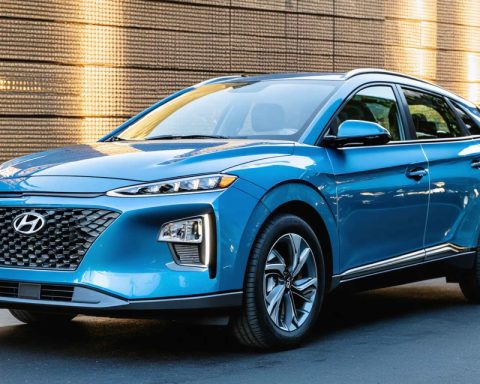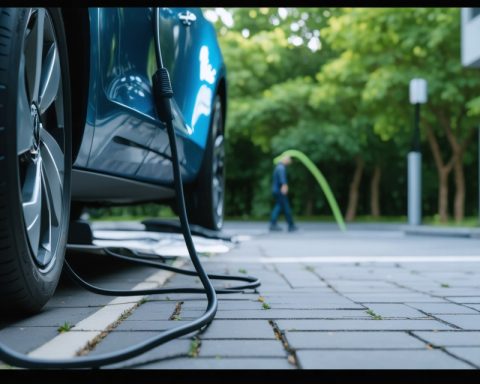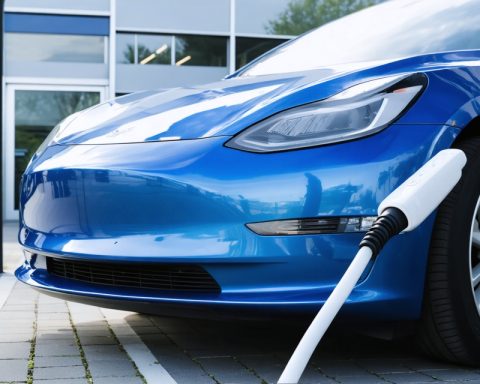- Fires involving electric vehicles (EVs) in Grand Junction, Colorado, highlight challenges with current firefighting techniques, driven by thermal runaway.
- EV battery fires can spread rapidly, overwhelming conventional measures such as water and foam.
- Firefighters in Colorado Springs have innovated with fire blankets and specialised tow trucks to manage EV fires safely.
- International collaboration is ongoing to develop effective strategies for EV fire prevention and control.
- Early intervention, such as pre-emptively cooling battery casings, shows promise in mitigating potential fire risks.
- The shift towards electric vehicles necessitates advancements in both safety innovations and emergency response techniques.
- The narrative of thermal runaway underscores the delicate balance between technological progress and uncontrollable natural forces.
On the sun-drenched streets of Grand Junction, Colorado, a shadow looms over fire engines and emergency crews as they confront an incendiary challenge of the future—electric vehicle (EV) fires. In recent years, these modern marvels of transportation have sparked a reexamination of firefighting techniques worldwide, fuelled by a phenomenon known as “thermal runaway.”
When the sleek casings of an EV battery collapse under certain pressures, a chain reaction ignites, creating a fire so intense it can leap from one battery cell to another like a scorching wildfire across a dry landscape. Traditional weapons in the firefighting arsenal, namely water and foam, sputter ineffectively against these fiercer-than-life flames, often leaving responders scrambling for innovative solutions.
In Colorado Springs, the local fire department led by Lieutenant Wanderscheid has ventured into this new battleground with adaptability and ingenuity. A recent incident saw them shroud a rebellious electric car in thick fire blankets to stifle the flames temporarily. Specialised tow trucks then whisk the smouldering carcass away from populated areas, allowing it to burn out safely. This process, while novel, highlights an ongoing quest in finding a reliable method to tame these untameable machines.
From trade shows locally to international discourse, the conversation crackles with urgency and cooperation as the firefighting community and car manufacturers explore potential strategies. A promising frontier lies in early intervention—dousing battery casings with water before they dream of rebellion, quenching potential infernos before they fully awaken.
Amidst these fiery trials, a critical realisation dawns: As our society rapidly transitions to greener transportation solutions, the importance of safety innovations cannot be overstated. The global push for electric vehicles demands not only advancements in energy efficiency but also a parallel evolution in emergency response techniques. The seamless travel of tomorrow’s roads depends on it.
The narrative of thermal runaway reminds us of the delicate balance between human ingenuity and nature’s untamable forces, a dance we must choreograph wisely as we accelerate toward a future paved with electric promises.
Unstoppable Inferno: Why Fighting EV Fires Requires New Heroes and Tools
Understanding the Challenges of Electric Vehicle Fires
Electric vehicle (EV) fires, driven by thermal runaway, represent a unique and growing challenge for emergency responders. As the adoption of EVs continues to surge, particularly in places like Grand Junction, Colorado, the need for effective firefighting tactics is more pertinent than ever. Here’s an in-depth look at strategies, technologies, and industry trends shaping the response to this fiery dilemma:
What is Thermal Runaway?
Thermal runaway is a self-accelerating reaction within EV batteries, where once ignited, the heat causes further internal cell damage, leading to a rapid and uncontrollable increase in temperature.
1. Heat Propagation: When one cell overheats, it can trigger a cascading effect, leading to severe fires.
2. Difficulty to Contain: Unlike typical vehicle fires, EV fires can reignite hours or even days later if the root cause is not addressed.
Current Approaches and Innovations
# How to Combat EV Fires
1. Use Fire Blankets: Cover the vehicle with fire-resistant blankets to smother flames and limit oxygen supply, as demonstrated by Lieutenant Wanderscheid’s team in Colorado Springs.
2. Specialised Tow Trucks: Transport vehicles away from populated areas to reduce risk, allowing them to burn out in controlled situations.
3. Pre-emptive Measures: Employ water or specialised fire-retardant chemicals early to stop fires before they amplify.
# Innovative Technologies
1. Battery Designs: Automakers are actively researching safer battery configurations and materials, such as solid-state batteries, which inherently have better thermal stability.
2. Fire Suppression Systems: Development of integrated onboard systems that can detect and neutralise fires before they spread.
# Real-World Use Cases
– Fire Department Training: Regular training seminars for first responders to familiarise them with the behaviour and mitigation of EV fires.
– Collaboration with Automakers: Joint exercises and knowledge-sharing initiatives to refine response techniques effectively.
Market Forecasts & Industry Trends
1. Growing EV Adoption: With a market growth rate projected at 29% from 2023 to 2028, the fire safety industry is evolving alongside to meet these new demands.
2. Investment in Fire Safety Tech: A notable increase in funding toward research in EV fire mitigation technologies is expected, as stakeholders recognise the critical nature of these innovations.
Limitations and Challenges
Despite advancements, several obstacles persist:
– Reignition: The potential for EV fires to reignite complicates firefighting efforts.
– Resource Intensiveness: Current responses require significant human and material resources (often unavailable in smaller departments).
Security & Sustainability
# Enhancing Safety
1. Regular Maintenance: Regular checks and servicing of EV batteries can help detect signs of wear or damage that might lead to fires.
2. Consumer Education: Educating EV owners on safe handling and charging techniques can prevent many battery-related incidents.
# Sustainable Approaches
– Recycling Battery Materials: Advances in recycling processes can reduce the environmental impact of damaged batteries.
Conclusion and Recommendations
To effectively tackle EV fires, a multi-faceted approach is essential. Implement readiness programmes to equip fire departments with the necessary tools and knowledge, engage in constant innovation in battery technologies, and foster collaboration between manufacturers and emergency services. For more insights into automotive developments, visit Tesla or Ford.
Quick Tips:
– Stay Informed: Keep updated with local fire department guidelines.
– Invest in Safety Gear: Having a fire extinguisher designed for battery fires at home or in your garage can preemptively mitigate damage.
As we drive towards a future filled with electric vehicles, ensuring the safety of passengers and emergency responders must remain a priority.















